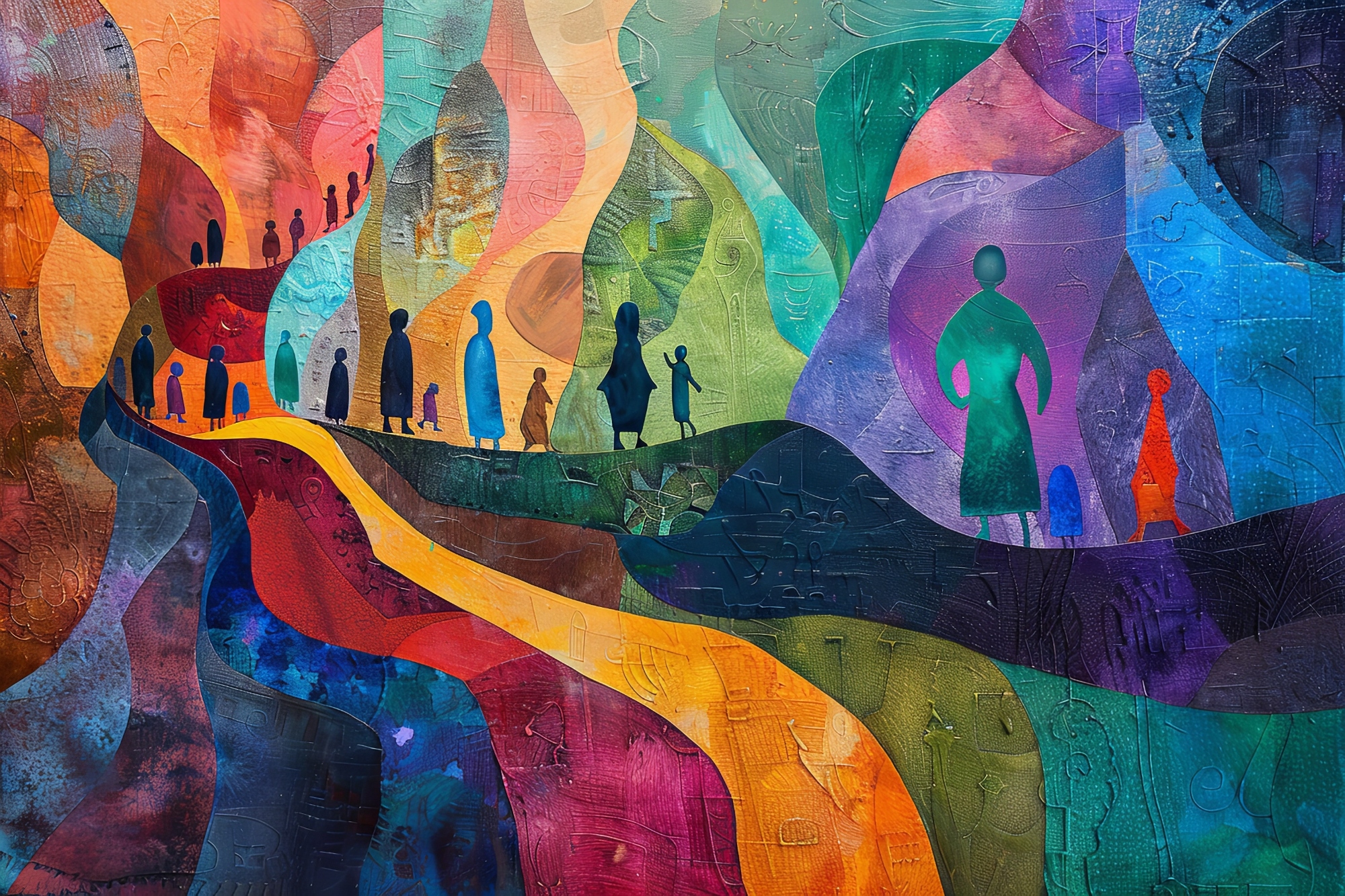
The Pew Research Center’s Religious Landscape Study provides one of the most comprehensive portraits of religious communities in the U.S. The Center aims to to provide authoritative figures on the size of U.S. religious groups because the U.S. census does not collect that information.
The Pew Center has conducted three of these landscape surveys over the past 17 years—in 2007, 2014, and 2023-2024—with more than 35,000 randomly sampled respondents each time.
In these surveys, the long-term trend has shown a decline in Christian affiliation and an increase in religiously unaffiliated individuals, the so-called “nones.” However, in this latest survey, conducted over seven months in 2023-2024, the new data suggests that some of these changes may be slowing or stabilizing.
Here are five key interreligious takeaways from the study:
1. The decline of Christianity may be slowing.
This was the biggest headline from the study. For decades, the percentage of U.S. adults identifying as Christian has been decreasing. However, recent data indicates that this decline may be leveling off. In 2007, about 78% of Americans identified as Christian. By 2020, that number had dropped to about 63%, and in the latest study, it stands at around 62%. This suggests that the rapid decline seen in past decades may not continue at the same pace.
Pew theorizes that one possible reason for this stabilization is that while younger generations are less likely to identify as Christian, older generations, who are more religiously affiliated, are maintaining their faith identities. Additionally, Christian organizations may be adapting to cultural changes in ways that retain more followers.
2. The religiously unaffiliated continue to grow.
One of the most significant religious shifts in the U.S. has been the rise of the religiously unaffiliated, often referred to as the “nones.” This group includes atheists, agnostics, and those who identify as having no particular religion. In 2007, only 16% of U.S. adults fell into this category. By 2023-24, that number had nearly doubled to 29%.
The growth of the “nones” reflects broader cultural and societal trends, including increased secularism, a decline in institutional trust, and a focus on personal spirituality over organized religion. This shift has important implications for religious institutions, political engagement, and social values.
3. Generational differences are driving religious change.
Religious identity varies significantly by age. The study found that younger adults are far less likely to identify as Christian than older generations. Among adults aged 18 to 29, fewer than half (45%) identify as Christian, while 44% identify as religiously unaffiliated. This contrasts sharply with older age groups, where Christianity remains the dominant religious identity.
This generational shift suggests that the religious landscape of the U.S. may continue evolving in the coming decades. While some younger adults may return to religious affiliation later in life, the overall trend points toward a more religiously diverse and possibly secular future.
4. Religious switching and fluidity are increasing.
Religious identity in the U.S. is more fluid than ever, with many people changing their religious affiliation over their lifetimes. According to the study, about 35% of Americans have switched religions at some point, either converting to a different faith or leaving religion altogether.
This fluidity reflects a broader cultural trend toward religious exploration and individual choice. Some people move from Christianity to non-Christian religions, while others shift from religious affiliation to no affiliation or secularism. Conversely, there are also cases of individuals raised without religion later adopting a faith, although the percentage is small at 3.5%. The diversity of religious paths highlights the increasing complexity of religious identity in America.
5. Religion and politics remain closely linked.
Religious affiliation continues to be a strong predictor of political beliefs in the U.S. The study found that highly religious Americans, particularly evangelical Protestants, tend to align with the Republican Party. In contrast, religiously unaffiliated individuals and members of non-Christian faiths are more likely to support the Democratic Party.
However, this correlation is not absolute. For example, Latino Catholics and Black Protestants, while religiously engaged, tend to lean Democratic. This highlights the intersection of religion, race, and politics in shaping ideological perspectives. As the religious composition of the U.S. continues to evolve, these political dynamics may also shift.